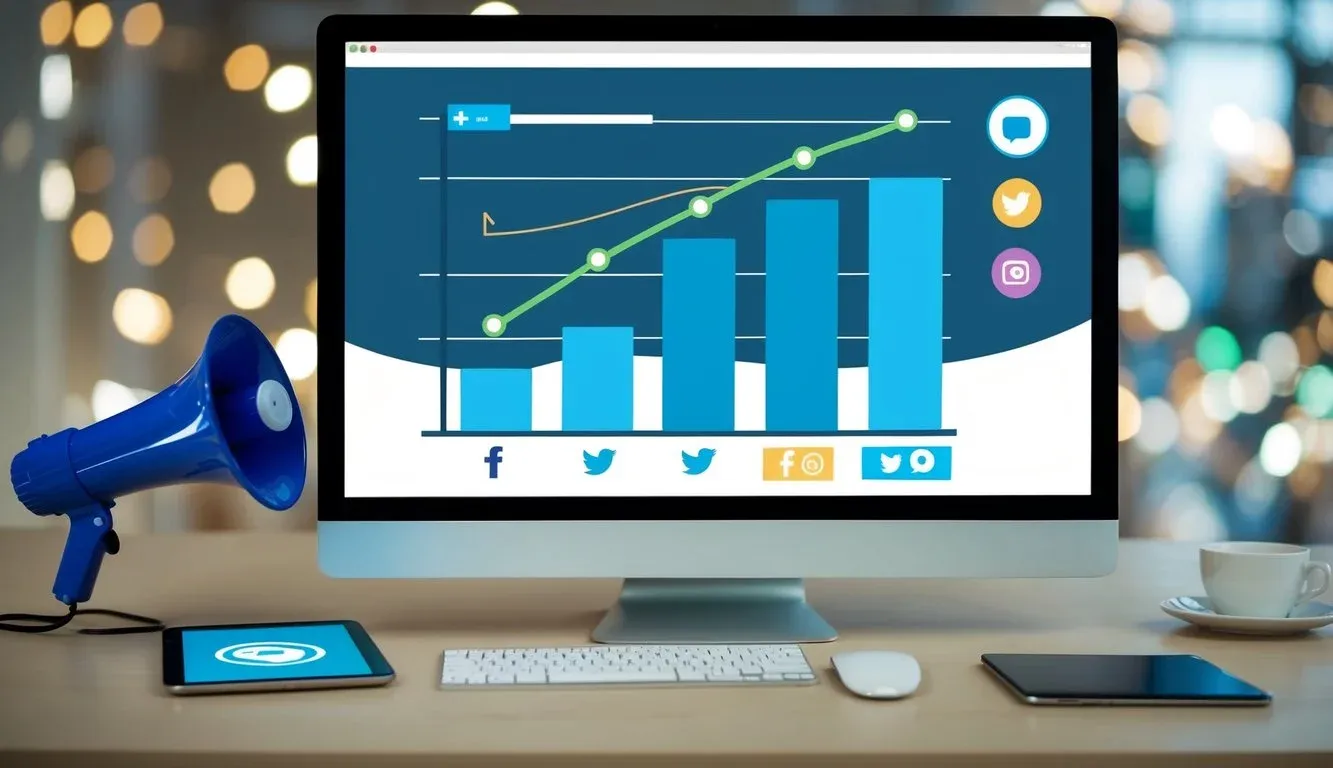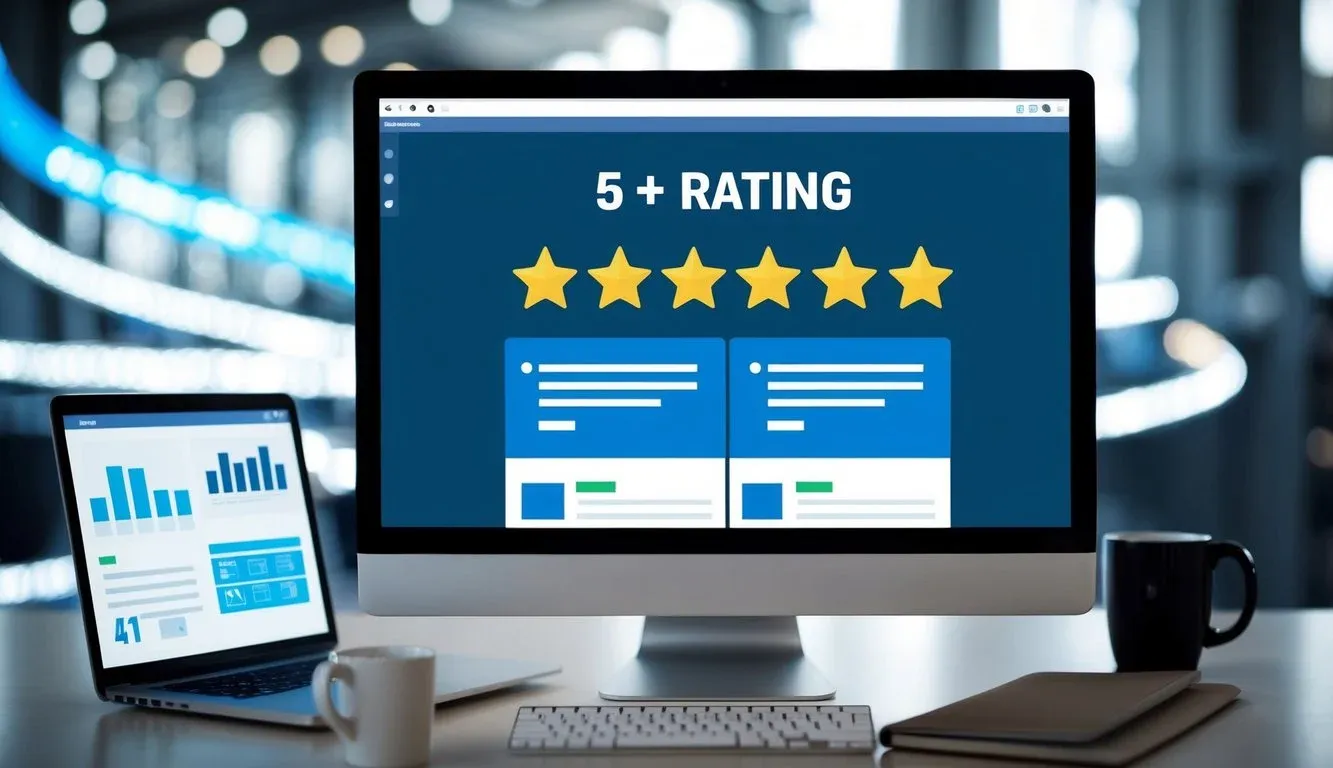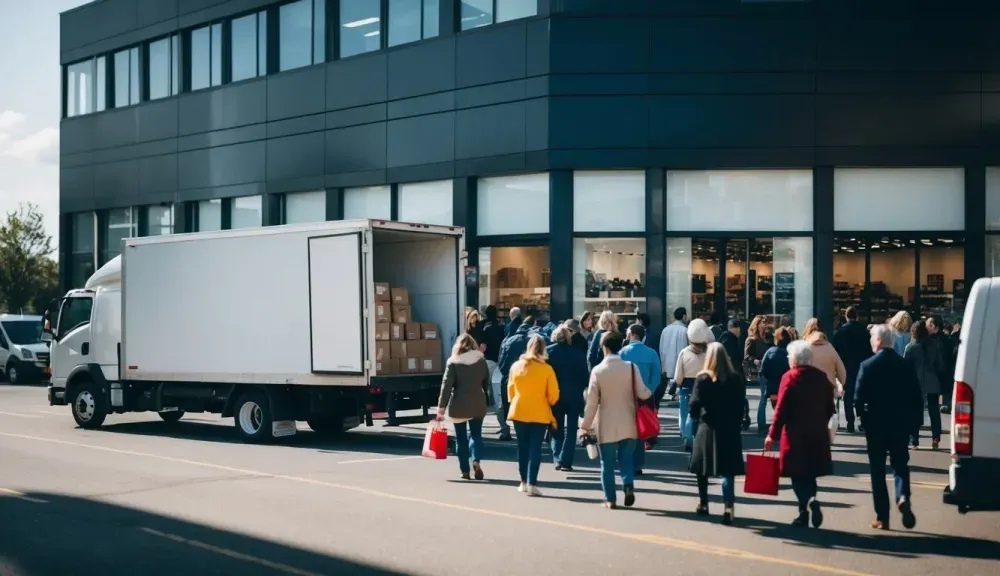Proven Ways to Drive Traffic to Your Online Store Today

Getting people to visit your online store can feel like a big challenge. Many store owners struggle to attract shoppers, even with great products and competitive prices.

A mix of search engine optimization (SEO), social media marketing, and targeted content creation can bring more visitors to your online store. These methods work together to help potential customers find your products when they search online or browse social media platforms.
Building store traffic takes time and consistent effort. Smart email marketing campaigns help bring back previous customers, while partnerships with social media influencers can introduce your brand to new audiences. Using these strategies together creates multiple paths for shoppers to discover your store.
Key Takeaways
- Search optimization and quality content help stores rank higher in search results
- Social media marketing creates brand awareness and drives targeted traffic
- Email campaigns and influencer partnerships build lasting customer relationships
Establishing Your Online Store's Web Presence
A strong online presence starts with a professional website that loads quickly and works well on all devices. Fast loading speeds keep visitors engaged and reduce the chance they'll leave before making a purchase.
Mobile responsiveness is essential since most shoppers browse stores on their phones. The website must adjust smoothly to different screen sizes and be easy to navigate with touch controls.
Clear navigation helps customers find products quickly. The menu structure should be simple and logical, with categories that make sense to shoppers.
Key Technical Elements:
- Fast page loading (under 3 seconds)
- Mobile-friendly design
- Easy-to-use navigation
- Secure HTTPS connection
- Clear product categories
Internal linking connects related products and content. This helps customers discover more items and keeps them browsing longer.
Brand awareness grows through consistent design and messaging across the website. The store's logo, colors, and style should match on every page.
Domain authority builds over time as the site gains quality backlinks and creates valuable content. Higher authority often leads to better search rankings and more traffic.
Regular website maintenance keeps everything running smoothly. Check for broken links, update content, and monitor site performance to maintain a professional image.
A content delivery network (CDN) spreads website files across multiple servers. This makes pages load faster for visitors from different locations.
Search Engine Optimization Strategies
Search engine optimization helps online stores appear higher in search results and attract more potential customers. A mix of smart keyword choices, website tweaks, and outside promotion creates a strong SEO foundation.
Keyword Optimization
Effective keyword research reveals what potential customers search for. The Google Keyword Planner tool shows monthly search volumes and competition levels for different terms.
Focus on product-specific keywords that match buyer intent. A mix of broad terms like "women's shoes" and specific phrases like "red leather ballet flats" works best.
Create a spreadsheet to track target keywords for each product page. Include the main keyword plus 2-3 related terms to target per page.
On-Page SEO Tactics
Title tags should include the main keyword within the first 60 characters. Each product page needs a unique, descriptive title that matches search intent.
Meta descriptions act like mini-ads in search results. Write compelling 150-160 character descriptions that include the target keyword and encourage clicks.
Product pages need clear headings with keywords. Use H1 tags for product names and H2/H3 tags for important features and specifications.
Add keywords naturally to product descriptions. Keep content readable and helpful rather than stuffed with terms.
Off-Page SEO Endeavors
Quality backlinks from relevant websites boost search rankings. Reach out to industry blogs, reviewers, and influencers to feature products.
Create shareable content like buying guides and how-to articles. This attracts natural links and establishes expertise.
Social media profiles support SEO efforts. Active accounts on platforms like Instagram and Pinterest drive traffic and engagement.
Build relationships with complementary brands. Guest posts and collaborative content create valuable backlink opportunities.
Social Media and Influencer Outreach
Social media platforms and influencer partnerships create powerful ways to attract new customers to online stores. Strategic promotion across different platforms combined with authentic influencer collaborations helps build brand awareness and drive targeted traffic.
Leveraging Social Media Platforms
Each social media platform offers unique opportunities to showcase products and engage potential customers. Instagram works well for visual content like product photos and lifestyle shots. Facebook excels at detailed product descriptions and building customer communities.
Regular posting keeps followers engaged. A mix of product features, customer testimonials, and behind-the-scenes content works best. Recommended posting frequency:
- Instagram: 4-7 posts per week
- Facebook: 3-5 posts per week
- Pinterest: 5-10 pins per day
The Role of Influencers and Affiliate Marketing
Micro-influencers with 10,000-50,000 followers often deliver better engagement rates than mega-influencers. Their audiences tend to be more targeted and responsive to product recommendations.
Creating an affiliate program gives influencers incentive to promote products consistently. Standard commission rates range from 5-20% depending on product type and price point.
Successful influencer partnerships require clear guidelines and expectations. Provide influencers with:
- Product samples
- Brand style guides
- Unique discount codes
- Tracking links
- Content requirements
Giveaways and contests with influencers can quickly boost visibility and follower growth. Make entry rules simple and aligned with business goals like following accounts or sharing posts.
Content Marketing: Creation to Promotion

Effective content marketing attracts visitors by delivering useful information that solves problems and answers questions. Strategic content creation builds trust while promoting products in an authentic way.
Blogging as a Traffic Booster
Creating helpful blog posts drives organic search traffic when focused on relevant keywords and topics. A blog should address common customer questions and pain points.
Product tutorials, buying guides, and industry news keep readers engaged while highlighting store offerings naturally.
Posts need clear formatting with headers, short paragraphs, and bullet points for easy scanning. Include high-quality images to break up text.
Track blog performance in analytics to identify popular topics and optimize future content.
Visuals and Video Content Engagement
Videos help explain products better than text alone. Product demonstrations, unboxing videos, and how-to tutorials provide value while showcasing items.
High-quality product photos from multiple angles give shoppers confidence to buy. User-generated content like customer photos builds social proof.
Share visual content across social media platforms to expand reach. Add descriptive alt text to help images rank in search results.
Email Strategies for Customer Retention
Building an email list creates direct connections with interested shoppers. Offer exclusive discounts or useful content to encourage signups.
Send regular newsletters with new products, blog highlights, and customer testimonials. Segment the list to deliver personalized recommendations.
Welcome emails, abandoned cart reminders, and post-purchase follow-ups keep customers engaged through their buying journey.
Track open rates and click-throughs to refine email content and timing.
Leveraging Reviews and Customer Feedback

Customer reviews are powerful tools that can drive more visitors to any online store. When shoppers see positive feedback from real customers, they feel more confident making purchases.
The first step is to actively collect reviews through post-purchase emails and feedback forms. Make it easy for customers to share their experiences by keeping surveys short and simple.
Reviews should appear in multiple places across the online store:
- Product pages
- Homepage testimonials
- Landing pages
- Marketing emails
Google My Business and Yelp profiles need regular monitoring and responses. A store owner should thank customers for positive reviews and address negative ones professionally.
Key places to showcase reviews:
- Star ratings under products
- Written testimonials with customer photos
- Video reviews from happy clients
- Screenshots of social media praise
The best product reviews include specific details about quality, shipping speed, and customer service. This helps potential buyers make informed decisions.
Store owners can encourage more reviews by:
- Sending follow-up emails after delivery
- Offering small incentives like discount codes
- Making the review process quick and mobile-friendly
- Responding promptly to all feedback
Negative reviews require careful handling. Address concerns directly, offer solutions, and show other customers the store values their feedback.
Monitoring Performance with Analytics

Analytics tools help online store owners track important data about their website visitors and sales performance. Google Analytics remains one of the most popular free options for monitoring traffic.
Setting up analytics tracking gives store owners access to vital metrics like page views, visitor counts, and time spent on site. This data shows which products and pages attract the most interest.
Key metrics to monitor:
- Daily visitor count
- Traffic sources
- Popular products
- Average order value
- Customer journey paths
- Cart abandonment rates
Store owners should check their analytics dashboard at least weekly to spot trends. Regular monitoring helps identify both successful marketing efforts and areas needing improvement.
Tracking customer behavior reveals how visitors move through the site before making purchases. This insight helps optimize product placement and streamline the checkout process.
Traffic source data shows which marketing channels bring in the most visitors. Store owners can use this information to focus their efforts on platforms that deliver the best results.
Free analytics tools provide enough data for most small online stores to make informed decisions. As stores grow, paid analytics platforms offer more detailed reporting options.
Remember to properly install tracking codes on all pages to ensure accurate data collection. Regular checks help catch any tracking issues early.
Frequently Asked Questions

Common questions about driving traffic to online stores focus on free marketing methods, social media strategies, and proven techniques to boost visitor numbers through organic search and content creation.
Q: What are effective strategies to increase traffic to my online store without spending money?
Content creation stands as a top free traffic strategy. Creating blog posts, product guides, and helpful tutorials attracts potential customers searching for solutions.
Search engine optimization brings long-term results. Using relevant keywords in product descriptions, meta titles, and URLs helps stores rank higher in search results.
Building an email list creates direct connections with customers. Offering a newsletter signup with valuable content or discount codes grows a dedicated audience.
Q: Which free methods can I use to drive more visitors to my new e-commerce website?
Guest posting on relevant blogs expands reach to new audiences. Writing valuable content for established websites builds credibility and creates backlinks.
Pinterest marketing works well for visual products. Creating boards with product images and helpful content attracts users looking for shopping inspiration.
Starting a YouTube channel showcases products in action. Video content helps build trust and demonstrates product features effectively.
Q: How can I leverage social media platforms to enhance my online store's visibility?
Regular posting on Instagram and Facebook keeps followers engaged. Sharing product photos, customer reviews, and behind-the-scenes content maintains interest.
Engaging with followers builds community. Responding to comments and messages creates relationships that turn into sales.
Using platform-specific features like Instagram Stories or Facebook Live increases reach. These tools help stores connect with audiences in real-time.
Q: What techniques can I employ to attract more traffic to my Shopify store?
Creating detailed product descriptions improves search visibility. Including specific features, measurements, and use cases helps customers find products.
Starting a blog section adds valuable content. Writing about industry topics and product care guides brings in targeted traffic.
Cross-promoting with complementary brands expands reach. Partnering with non-competing stores creates win-win situations.
Q: Can you suggest ways to improve organic traffic to my online store?
Optimizing page load speed improves search rankings. Fast-loading pages keep visitors engaged and reduce bounce rates.
Creating category pages with helpful content aids navigation. Well-organized product collections make it easier for customers to find items.
Building quality backlinks increases domain authority. Getting mentioned on reputable websites improves search rankings.
Q: What are the best practices for boosting order numbers and customer visits on my e-commerce site?
Adding customer reviews builds trust. Genuine feedback helps convince new visitors to make purchases.
Creating an FAQ section answers common questions. Clear information helps customers make buying decisions.
Setting up abandoned cart emails recovers lost sales. Reminder messages bring back customers who left items in their cart.
Q: What are some proven ways to drive traffic to my online store?
There are many effective strategies to drive traffic to your online store. You can utilize social media platforms like Facebook to promote your website and collaborate with influencers. Don't forget about SEO techniques to increase website traffic organically!
Q: How can I use social media to drive traffic to my ecommerce site?
Social media is a powerful tool! You can create engaging content, run promotions, and share user-generated content to drive traffic to your website. Consider using platforms like Instagram and Pinterest to showcase your products visually and attract your target audience.
Q: Is it important to optimize my ecommerce website for search engines?
Absolutely! Optimizing your ecommerce website for search engines can help increase ecommerce traffic significantly. Use relevant keywords, optimize your product descriptions, and ensure your site loads quickly to improve your ranking on search engines like Google.
Q: How can I effectively drive traffic to my website through email marketing?
Email marketing is a great way to keep existing customers engaged and drive them back to your website. Send out newsletters with updates, special offers, and new product launches to encourage clicks and visits to your site!
Q: What role does free shipping play in driving traffic to my online store?
Offering free shipping can be a game-changer! It’s a major incentive for customers and can drive conversions. Many shoppers will abandon their carts if they see high shipping costs, so consider incorporating free shipping into your marketing strategies.
Q: How can I utilize content marketing to increase traffic to my online store?
Content marketing is a fantastic way to drive traffic to your ecommerce site. Start a blog related to your products, create how-to guides, or even videos that can attract visitors. This not only helps in driving traffic but also positions your brand as a trusted authority.
Q: Are there any tools that can help me analyze website traffic?
Yes! Tools like Google Analytics are essential for any business owner looking to drive traffic to their website. They help you understand your audience better, track visitor behavior, and optimize your site accordingly to increase traffic and sales.
Q: How can I drive traffic to my store after a product launch?
After a product launch, it’s crucial to create buzz! Use email campaigns, social media posts, and even influencer partnerships to promote your new products. Running time-limited promotions can also encourage people to visit your site quickly!
Q: What are some strategies to reach new customers and drive traffic to my ecommerce store?
To reach new customers, consider collaborations with other brands, hosting online events, or participating in online marketplaces. Additionally, using paid ads can effectively drive traffic to your ecommerce store by targeting specific demographics.
Ready to Get More Eyes on Your Store?
Join our mini-course at WAH Academy and get beginner-friendly guidance to drive traffic, boost visibility, and turn clicks into customers.
No fluff. Just real tactics that actually work.
Tap the button and start growing your store today.
